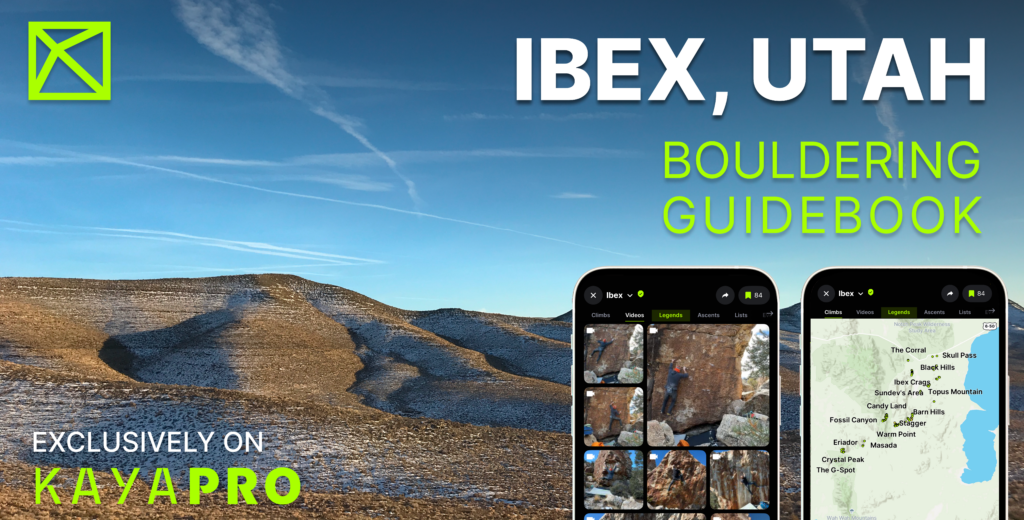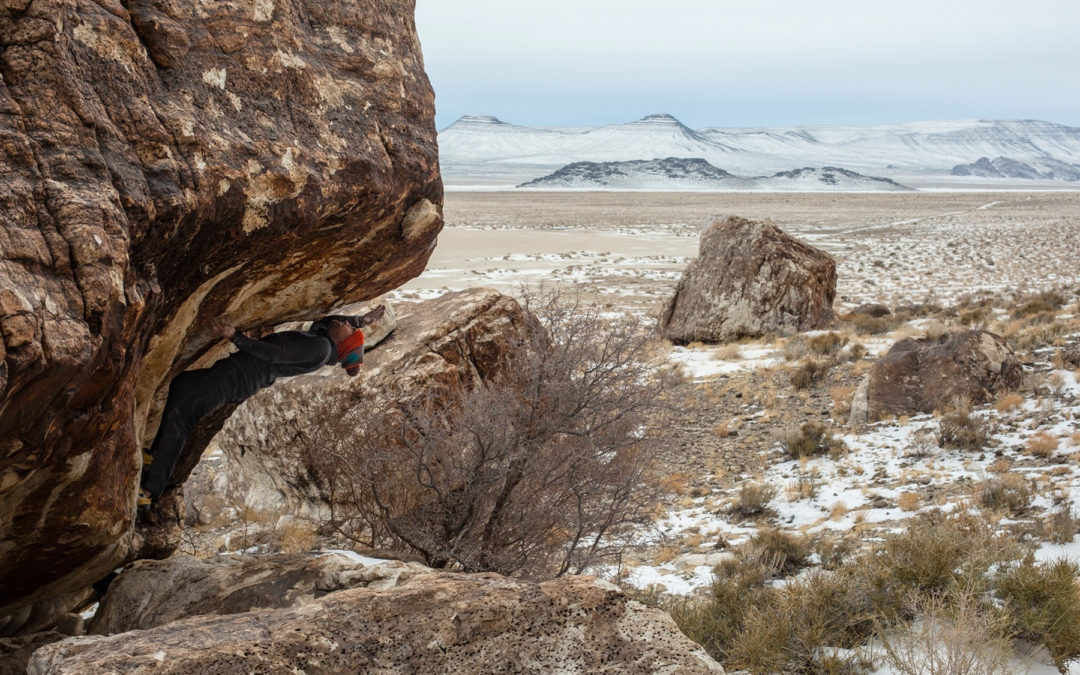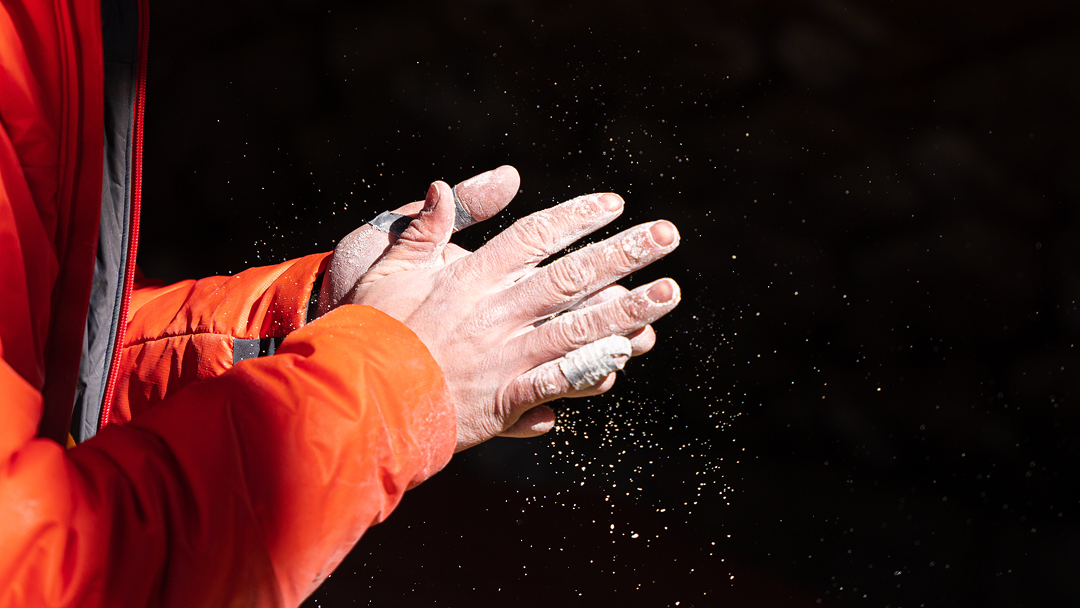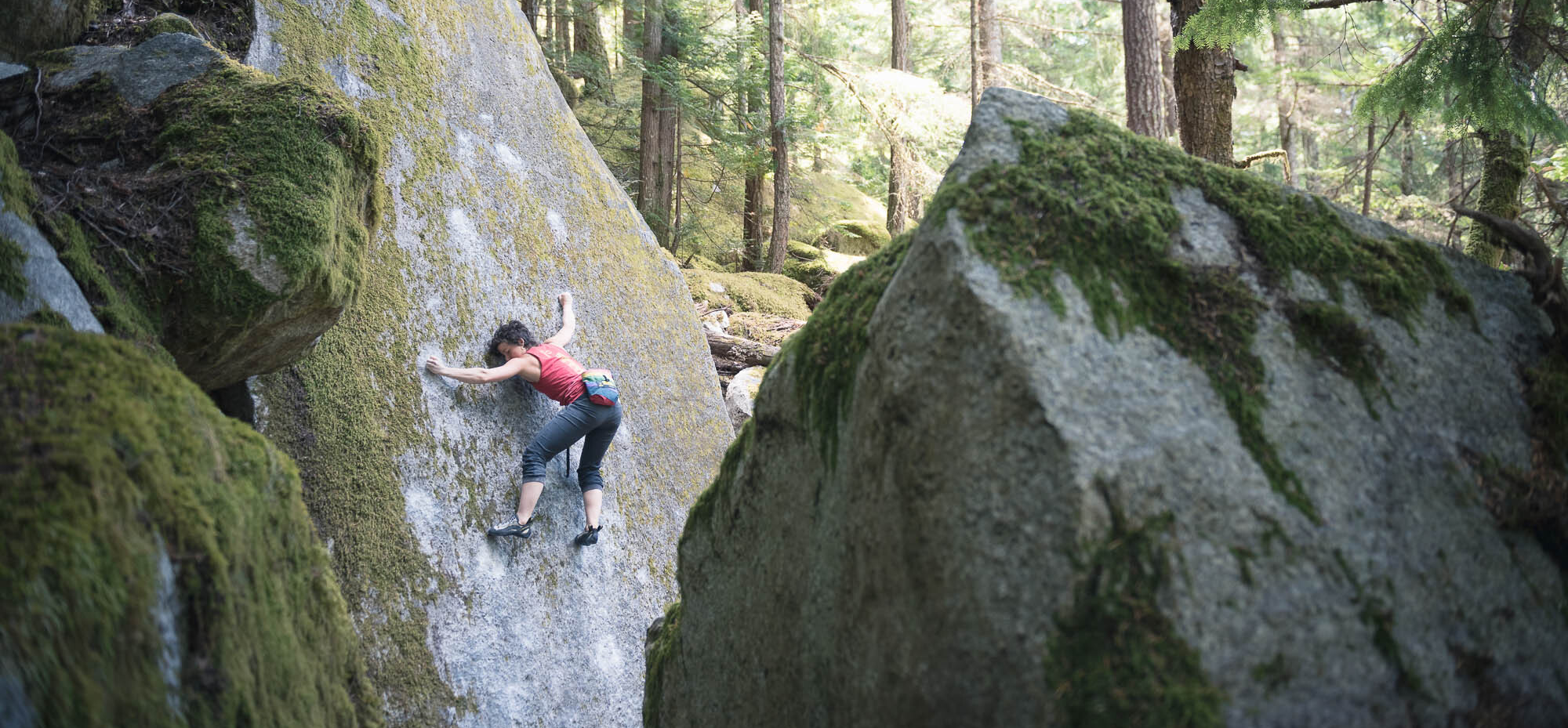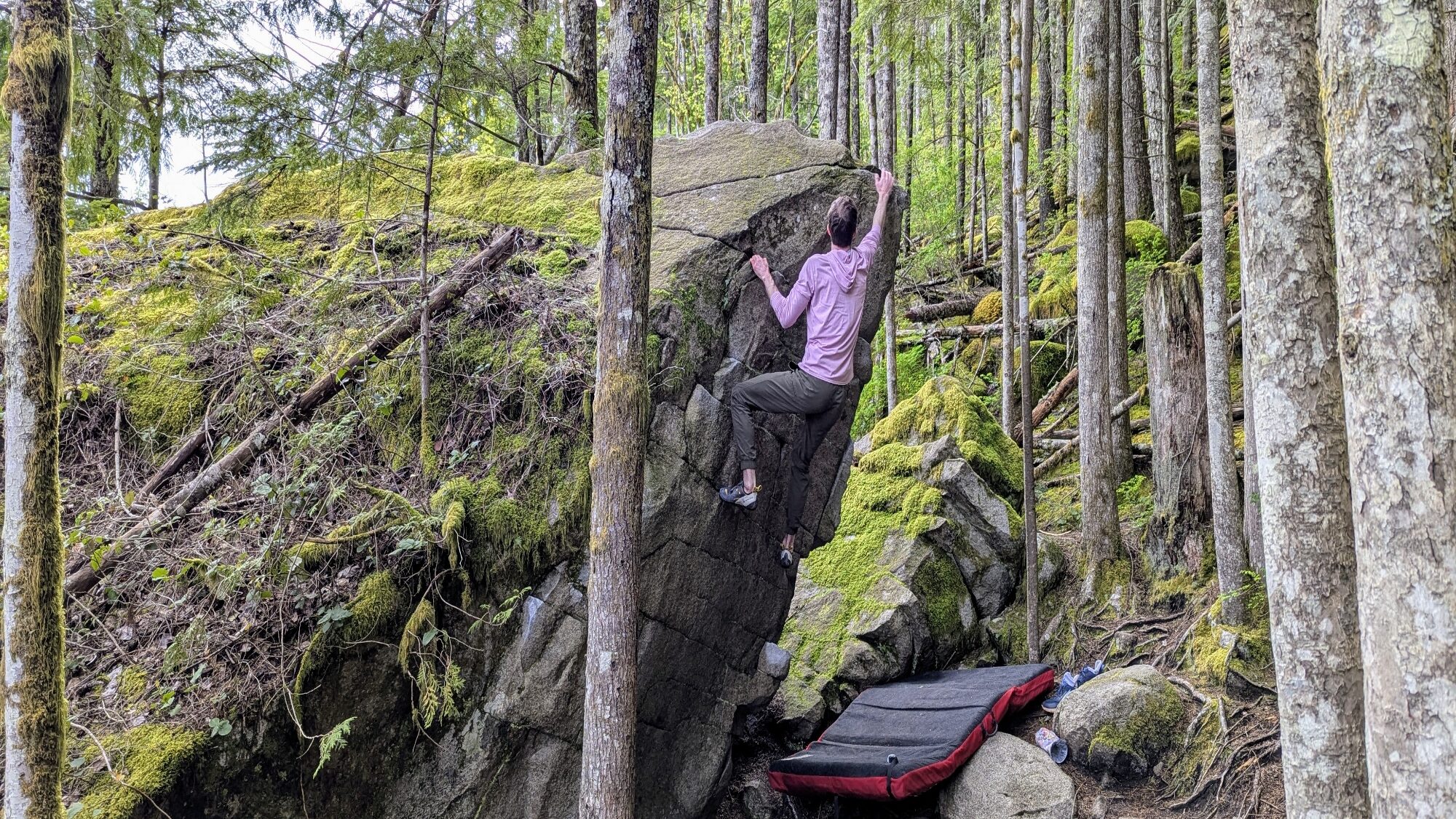Ibex, Utah Bouldering Overview
Tucked deep in Utah’s west desert, Ibex is one of the most unique and remote bouldering destinations in the U.S. Towering quartzite cliffs and massive scattered blocks rise from an ancient dry lake bed, creating a landscape of stark white boulders, wild movement, and plenty of potential. The rock here is some of the purest quartzite in the world—more than 99% quartz.
Remote, wild, and absolutely stunning, Ibex is a must-visit for those willing to embrace the solitude and raw beauty of desert climbing. This guide will walk you through everything you need to know to get the most out of your Ibex bouldering trip, from the best problems to local beta and travel logistics.
Or, check out The Top 5 Can’t-miss Boulders in Ibex on YouTube!
Understanding Ibex Bouldering
History of Ibex Bouldering
Bouldering in Ibex began in the early 1990s when legendary climber, John Sherman, first explored the area’s massive quartzite blocks. As word spread, Boone Speed, Mike Call, and other Salt Lake City climbers— Jonathan Knight, Ian Glas, Brian Mecham, and Jeff Baldwin—continued developing the area. Drawn by the striking white walls, highball potential, and bulletproof rock, these pioneers established many classic problems in Ibex. The remote location meant it never saw the same crowds as Joe’s Valley or Little Cottonwood Canyon, keeping the area adventurous and quiet.
Ibex is still known for its stunning desert setting, unique movement, and highball boulders. Recent development has slowed, but the potential for new problems remains for those with vision and commitment.
For more history, beta, and updates on new developments, check out Aaron Child’s full Ibex guide on KAYA.
Rock Type and Climbing Style
Ibex is known for its massive quartzite cliffs and boulders, which contain some of the purest quartzite in the world—over 99% quartz. This rock was originally deposited in a near-shore environment around 450 million years ago and has since been shaped into striking boulders that offer a mix of highballs, steep roofs, and technical face climbing. Quartzite’s durability means that climbing after rain is usually not an issue.
Best Times to Boulder in Ibex
Ibex is best in the cooler months, with prime conditions from late fall through early spring (November to April). Ideal temperatures range between 32-65°F, with crisp, dry air that maximizes friction on the quartzite.
Winter days can be perfect for sending, but conditions vary—too cold, and the desert breeze can be miserable; too warm, and friction suffers. Always check the forecast, as the weather in the desert can change quickly.
Classics for Every Skill Level
Beginner-friendly Classics
While Ibex is known for its bold highballs, it also has plenty of accessible problems for those looking to ease into desert quartzite climbing. The area features over 500 problems graded V3 and under.
For an introduction to Ibex’s weird and unique style, check out The Hampster V3 and do your best to squeeze through the hole to topout. Also, check out Fire the Wave Motion Gun V3 for fun juggy crack climbing. If you’re looking for a slightly more adventurous line, The Holy Grail V4 is a must-try—offering classic Ibex height and a variety of movements.
No matter what area you choose, rest assured that there will be plenty of beginner-friendly problems to test yourself on. Climbing a large volume of climbs in this grade range is the fastest and best way to quickly improve your technique on this rock type!
Intermediate Classics
Some of the best climbs in Ibex are in the V6-V8 range. Friendly slopers and unique movement make Suspots V6 one of the best of the grade in Utah. For a tall classic, check out White Arete V7 for compression moves and an airy mantle. Or, start a couple moves lower on White Arete Sit V9.
Hard Classics
For those looking to test their limits, Ibex has a handful of harder five-star problems. These boulders, alongside many lesser-known gems, make Ibex a worthy destination for those seeking to climb in a remote, dramatic landscape while pushing their personal limits.
For unique crack bouldering, try Bruce Lee V10, and embrace Bruce by karate chopping the crack.
Try Bone Collector V11 for funky tension moves and toe-hooks.
You can’t miss The Pan Galactic Gargle Blaster, one of the best V10’s in Utah. An added bonus, it tops out on Sunspots V6, another best of the grade!
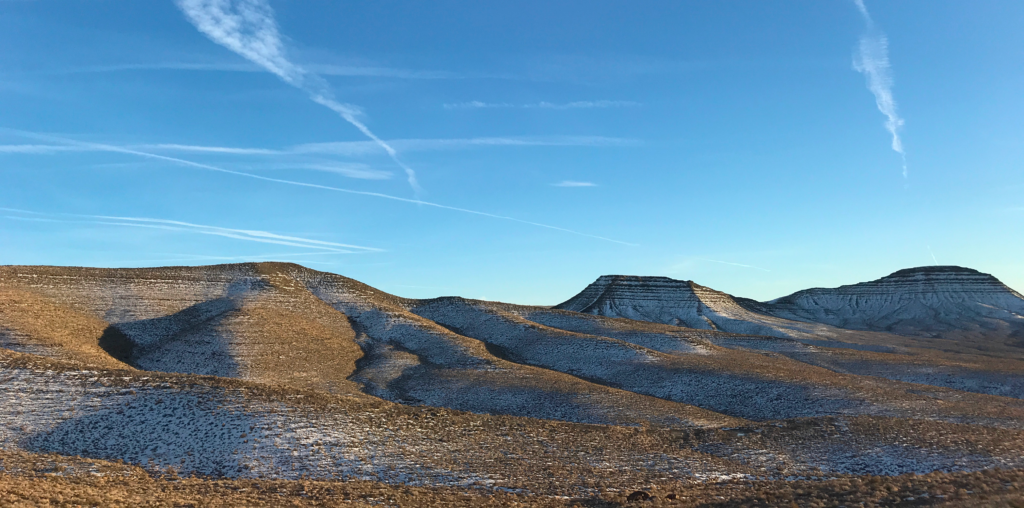
Planning Your First Ibex Bouldering Visit
Ibex offers a remote and unique climbing experience, with an abundance of high-quality problems scattered across the desert landscape. Unlike more developed climbing areas, planning is essential for a successful trip—there are no nearby towns, services, or cell reception. Before heading out, download the full GPS guide on KAYA and be prepared.
Required gear
The right climbing shoes are the foundation of your gear setup. Quartzite can be slippery, so stiff-rubbered shoes that excel at edging are ideal. You’ll need a chalk bag, of course, and crash pads for safe landings. The boulders in Ibex are known for being tall, so make sure you have ample spotters and pads! You should also stock up on extra food, water, and other essentials, just in case.
Navigation tips
The closest major town is Delta, Utah, where you should fill up on gas before you drive into the desert. Access to Ibex requires driving on dirt roads that can be rough, rocky, and unpredictable, so high-clearance vehicles and good tires are recommended. Be prepared for zero cell service—download maps in advance and know your route before heading out.
Safety and Ethics Essentials
- This area’s healthy ecosystem relies on Cryptobiotic soil, which takes hundreds of years to grow and is extremely fragile. Stay on the trails/roads and watch your steps.
- Since there is no cell service or nearby towns, let someone know where you’re headed and when you will return in case anything goes wrong.
- Be sure to take care in setting up proper landing zones with your crash pads, ensuring they are placed appropriately in the fall zone and do not have gaps between pads. Remember, you should be prepared to get yourself out of any bad fall you may take.
- Look up weather conditions ahead of time and layer appropriately; the desert weather can be unpredictable.
- Pictographs can be found on many boulders around Ibex, and are noted in Aaron’s KAYA guide. Be respectful and do not touch or climb on any faces with rock art.
Camping Logistics
Ibex and the surrounding desert areas are managed by the Bureau of Land Management. It is all free, dispersed camping, which means you can camp anywhere, but please be respectful of the fragile desert environment. Try to stay in established, cleared areas and do not camp directly under any boulders. Refrain from making fires, and leave all dead foliage where you found it— the desert relies on decaying plant matter to replenish nutrients in the soil.
Ibex Bouldering Conclusion
Ibex is a true desert gem—remote, wild, and home to some of the most unique quartzite boulders in the country. Climbing here is an adventure, requiring careful planning, respect for the land, and a willingness to embrace the solitude of the west desert. Whether you’re drawn to highball test pieces, technical face climbing, or the vast landscape, Ibex offers an unforgettable experience for those willing to make the journey. Come prepared, climb responsibly, and enjoy one of Utah’s best bouldering destinations.
Check out Aaron Child’s full Ibex Bouldering Guide on KAYA for more detailed beta.
